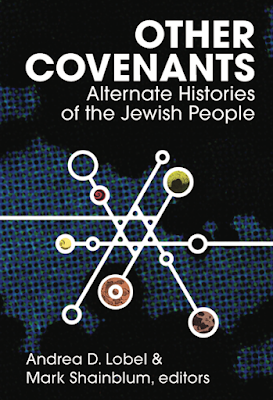New Threats to the Credibility of Counterfactual History in the Trump Era: Conway and Spicer Give Ammo to the Opponents of "What Ifs."
I don’t want to exaggerate
the danger, but the field of counterfactual history may not fare well in public
opinion in the years to come. The
rise of a “post-truth” and “post-fact” world will likely sour people on the
concept of counterfactual history, which may be misleadingly stigmatized as
associated with the legions of spin-doctors who play fast and loose with the
truth.
Just today, as reported in a
new piece
on The Hill, for example, Kellyanne Conway provided the opponents of alternate
history with new ammunition by raising the matter of “alternative facts” with
MSNBC host Chuck Todd.
As the piece reported:
“A top adviser to President Donald
Trump on Sunday
said White House press secretary Sean Spicer provided “alternative facts” to
reporters during his first briefing.”
“You’re saying it’s a falsehood. And they’re
giving, Sean Spicer, our press secretary, gave alternative facts to that,”
Conway said on NBC’s “Meet the Press.”
“Host Chuck Todd fired back at Conway over her
comments.”
“Look, alternative facts are not facts,” said
Chuck Todd. "They're falsehoods."
Spicer
on Saturday conducted his first press briefing with reporters, railing against
the media for its coverage of the crowd size at Trump's inauguration ceremony.
"This was the largest audience to ever
witness an inauguration, period, both in person and around the globe,” Spicer said.”
For the record, Spicer also smuggled in a
tendentious counterfactual into his news conference yesterday. Just as his boss, President Trump,
argued several weeks ago that he would have received a higher total in the
popular vote count had he campaigned differently (and in different states) in
the months leading up the election, Spicer argued (as quoted in a Vanity Fair
piece), that:
“This is also the first time
that fencing and magnetometers went as far back on the Mall, preventing
hundreds of thousands of people from being able to access the Mall as quickly
as they had in inaugurations past.”
Vanity Fair went on to reveal that:
“After Spicer’s comments, the United States Secret Service told reporters
that no magnetometers were used on the National Mall during the proceedings. “
Again, the point should be obvious: while Spicer and Trump have employed
counterfactuals deceptively, that should not discredit them as an analytical or
rhetorical mode of discourse. It
is their merging of self-serving “what ifs” together with fraudulent or
questionable claims that is the problem.
In the final analysis, it is
crucial to stress that counterfactual history (like its related literary
subgenre, alternate history) is committed to the idea of historical truth. It is a mode of historical inquiry that
seeks to establish (to the extent that such a thing can be established) the
truth of “what happened” by placing it in the context of what might have happened.
Genuine counterfactual history is only appreciated by people who
actually know the facticity of the past – by people who understand the ways in
which imagination can solidify and reinforce our understanding of what really
happened.
Like any other intellectual
endeavor, however, counterfactuals can be abused – especially by politicians –
for partisan and tendentious purposes.
This is true of political figures on both the right and the left. Unfortunately, the fondness of authoritarian populists, such
as Vladimir Putin and Donald Trump, for counterfactuals means that they fall
under suspicion by liberal democrats, who may be tempted to dismiss them
altogether – baby-in-bathwater style – as indelibly guilty by association.
I will remain alert for any
trends in this direction.



Comments